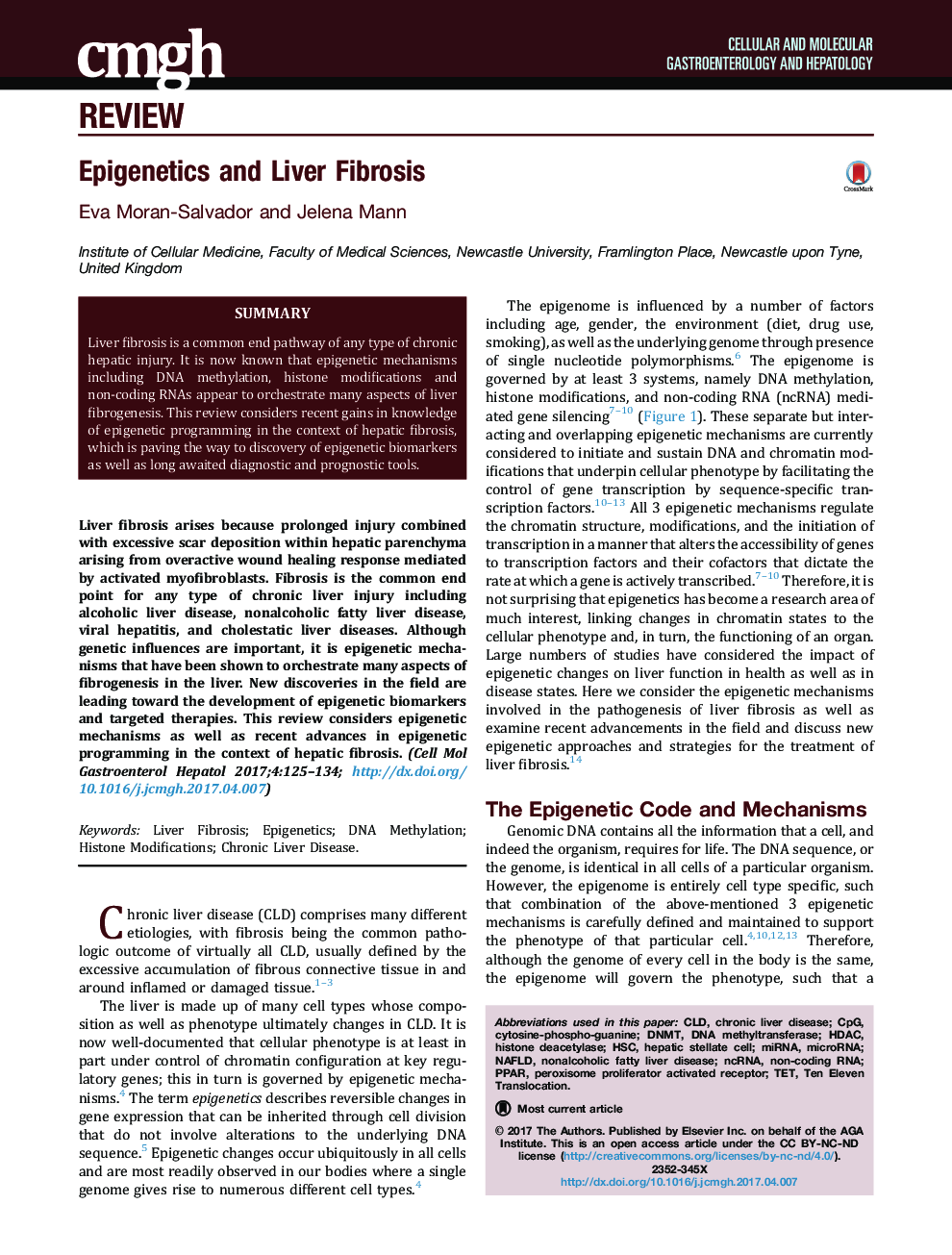| Article ID | Journal | Published Year | Pages | File Type |
|---|---|---|---|---|
| 5517181 | CMGH Cellular and Molecular Gastroenterology and Hepatology | 2017 | 10 Pages |
Liver fibrosis arises because prolonged injury combined with excessive scar deposition within hepatic parenchyma arising from overactive wound healing response mediated by activated myofibroblasts. Fibrosis is the common end point for any type of chronic liver injury including alcoholic liver disease, nonalcoholic fatty liver disease, viral hepatitis, and cholestatic liver diseases. Although genetic influences are important, it is epigenetic mechanisms that have been shown to orchestrate many aspects of fibrogenesis in the liver. New discoveries in the field are leading toward the development of epigenetic biomarkers and targeted therapies. This review considers epigenetic mechanisms as well as recent advances in epigenetic programming in the context of hepatic fibrosis.
